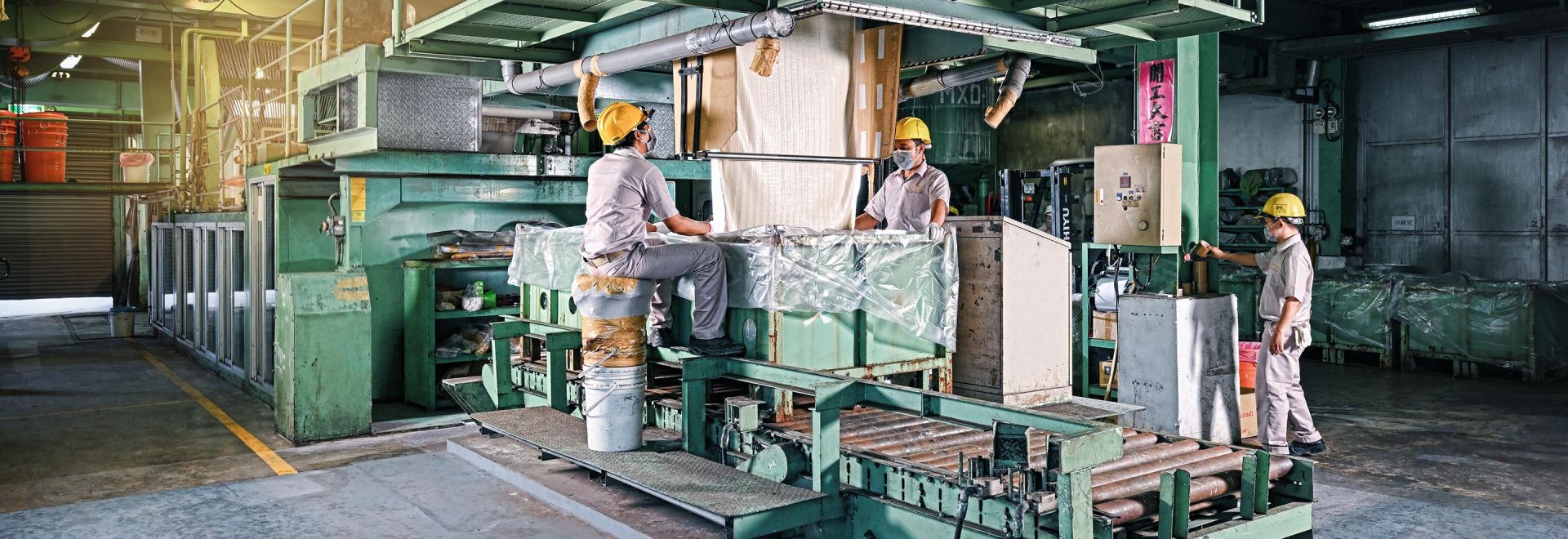|
Governance Units
|
Sustainability Development Committee and related subcommittees and executive departments.
|
|
Risk Categories
|
- Government policies and regulatory requirements: Carbon emission reporting and disclosure.
- Increasing energy procurement costs, including the potential need to increase renewable energy procurement.
- Increased costs for the construction of low-carbon facilities.
- Product cost increases due to low-carbon technology transitions.
- Customer churn and revenue decline due to low-carbon market demands.
- Extreme weather events such as heavy rainfall could disrupt factory production or lead to occupational accidents, increasing the frequency of accidents and exacerbating potential risks.
|
Opportunity Categories
|
- The company can take early action to develop strategic low-carbon products and gain a first-mover advantage in the market.
- Factories can implement energy management, save energy and reduce carbon emissions, and lower costs.
|
|
Strategies
|
- Short-term: Conduct carbon inventories to understand factory carbon emissions and develop response strategies.
- Mid-term: Implement energy management systems to save energy, reduce carbon emissions, and reduce waste. Develop niche products to reduce energy consumption. Develop low-carbon products to gain a first-mover advantage in the market.
- Long-term: Promote various carbon reduction measures to achieve net-zero emissions.
|
|
Risk Management
|
- The company has established a Sustainability Development Committee to focus on climate change and government policies and regulations, and to take early action and prepare.
- In response to the greenhouse gas effect caused by climate change, we have implemented carbon inventories according to ISO 14064-1 to keep track of the company's carbon emissions.
|
|
Metrics and Targets
|
- The purpose of carbon inventories is to provide a preliminary understanding of the company's current status and serve as a reference for developing future response strategies.
- In response to the government's carbon reduction target of 30% by 2030 and net-zero emissions by 2050, Croslene chemical will next implement an ISO energy management system to reduce carbon emissions by improving energy efficiency, reducing unnecessary energy consumption, developing niche products, and developing low-carbon products.
|
|
Financial Impact
|
- Financial impact: Carbon taxes/fees will increase operating costs.
- Risk description: The European Parliament is scheduled to implement a "carbon border tax" starting October 1, 2023, as a strategy to address the competitive disadvantage of domestic companies in terms of carbon reduction. The products currently regulated by the EU include electricity, cement, chemical fertilizers, steel, and aluminum, and organic chemicals, plastics, and hydrogen will be added in the future.
- Potential financial impact: The current carbon tax in the EU is about US$65 per ton (about NT$2,000), and Croslene chemical currently does not sell any products to Europe. The domestic carbon tax in Japan is 289 yen/ton. The carbon tax rate under Taiwan's Climate Change Response Act has not yet been finalized. Initial discussions in the media suggest a range of NT$100-300 per ton, increasing gradually to around NT$2,000 per ton.
- Financial impact explanation: Croslene chemical's carbon emissions in categories 1+2+3 in 2022 were 8,461 tonnes CO2e. If calculated at NT$200 per ton, the potential financial burden is about NT$1.69 million per year. If calculated at NT$2,000 per ton, it is NT$16.92 million per year.
|
Carbon Pricing Basis
|
If calculated at a carbon fee rate of NT$2,000 per ton, the carbon fee for 2022 is NT$16.92 million per year, and the total plant production is 35,992.8 tons.
Therefore, average product cost increase: NT$16,920,000/35,992,800 = NT$0.47 per kg.
|
Carbon Pricing Basis
|
- Since 2021, Croslene chemical has planned to implement ISO 14064-1 and has begun to voluntarily disclose the company's greenhouse gas emissions. It has also been audited by SGS every year. The carbon inventories for 2021 and 2022 have been passed, and the inventory scope covers the Taipei office and Hukou factory.
- According to the inventory results for 2021 and 2022, the company's main carbon emissions come from category 4: products used by the organization account for about 90.8%. Other categories include category 2: imported energy (electricity) accounting for about 4.2%; category 1: direct greenhouse gas emissions and removals, accounting for about 3.1%; and category 3: transportation, accounting for about 1.9%. As can be seen from the data above, the main source of carbon emissions is the procurement of raw materials.
-
In 2022, due to the easing of the pandemic, exports of latex for rubber gloves have declined sharply, leading to a reduction in carbon emissions, not due to carbon reduction measures.
-
It is planned to introduce an ISO energy management system to conduct energy efficiency diagnosis of the factory to effectively improve energy efficiency.
|
|
External Assurance or Confirmation
|
The company conducts annual carbon inventories and is routinely audited by SGS.
|







